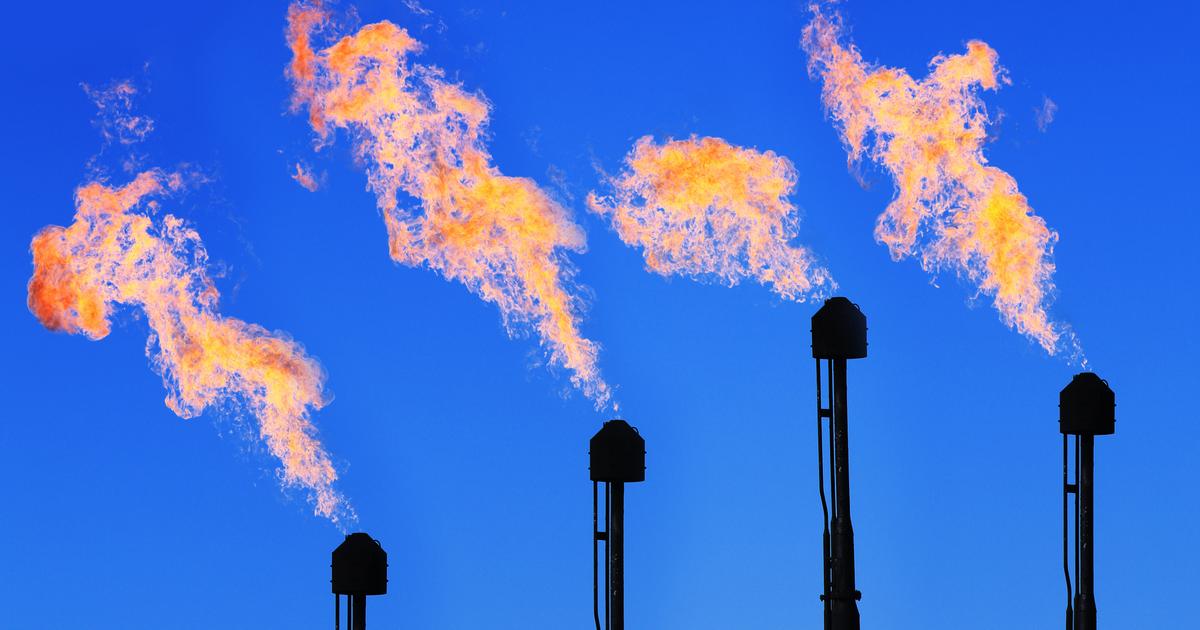Enlarge image
Most of the abandoned oil pumps in California - a potential source of methane leakage
Photo: Mario Tama / Getty Images
Methane (CH4) is a gas that is far more harmful to the climate than the notorious carbon dioxide (CO2).
Its greenhouse effect is particularly pronounced in the first two decades after it is released into the atmosphere.
One of the greatest successes of the Glasgow Climate Change Conference in November 2021 was the international agreement to reduce methane emissions.
But how?
A team at the Massachusetts Institute of Technology (MIT) has now developed a cost-effective technique for containing methane emissions and binding methane that has already been emitted from the atmosphere.
“Dirt cheap,” exults the US elite university - dirt cheap, but the American idiom also includes the word dirt.
Ordinary clay, made from a volcanic mineral called zeolite, such as is used in cat litter and is abundant on Earth, is believed to provide the solution.
This is always cheaper and less risky than the variant previously favored by many researchers with catalysts made of precious metals such as platinum or palladium, which require temperatures of at least 600 degrees Celsius and a separation of the methane and oxygen flows.
"They only solve the problem by creating a situation that amounts to an explosion," comments MIT environmental engineer Rebecca Brenneis.
Together with Desiree Plata and two other colleagues, she presented her alternative in the trade journal "ACS Environment Au".
Only 18 percent of global methane emissions came from the production of oil and gas, explains Plata.
Most of the gas is released from diffuse, widespread sources such as slash and burn, dairy farming, coal and ore mining, wetlands or the thawing permafrost in the polar region.
Therefore, the team first looked for a solution to filter methane from the atmosphere instead of directly at the source.
In the end, pure CO2 is created
It was successful with zeolite clay to which only small amounts of copper were added. In test tubes, the light-colored powder bound methane flowing through it - most effectively when it was heated to 300 degrees Celsius. But the method also worked at low temperatures, and even at low concentrations of methane. Most of all, she got by with ordinary air instead of just pure oxygen. "We're still surprised at how well it works," comments Desiree Plata.
This lays the foundation for an effective methane filter. However, technical details for using the method still have to be clarified, according to MIT. The US Department of Energy has approved a two million dollar grant to develop zeolite filters for facilities such as cattle stalls and coal mines, where pipes are usually already in place to divert the potentially explosive methane. This is the cheapest way to capture large amounts of methane, says Plata. The concentration at these points is too low for flaring, but ideal for your catalyst.
In the next 18 months, the team wants to present a usable solution.
On their own account, the filters could even be financially worthwhile because the waste heat can be used to generate electricity on a large scale.
"Most air filter technologies cost a lot of money and are never profitable," says Plata.
"Our technology could one day provide a counterexample."
Pure CO2 is created as a waste product.
Still a benefit for the climate, believes Plata.
Because carbon dioxide is known to be a greenhouse gas, but methane is 80 times more powerful.
ak






